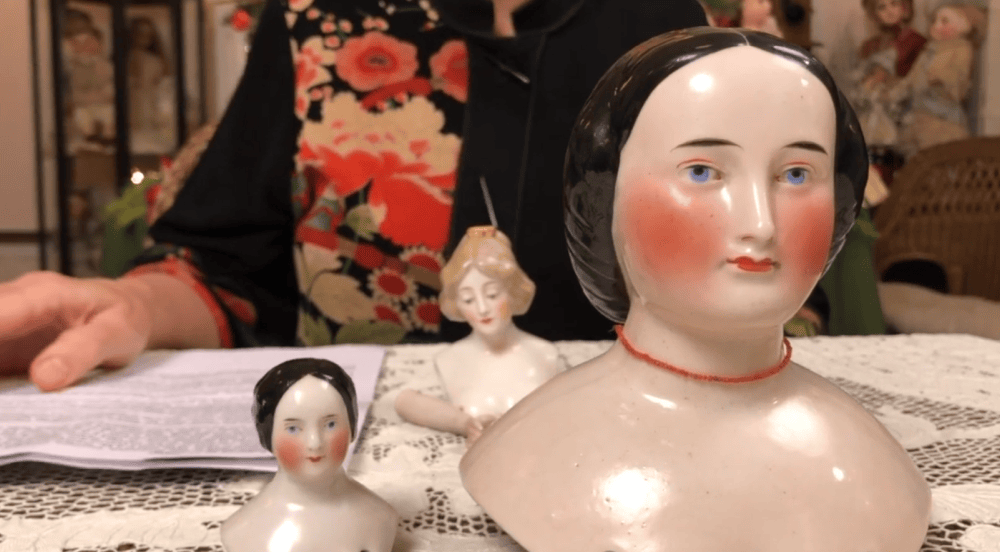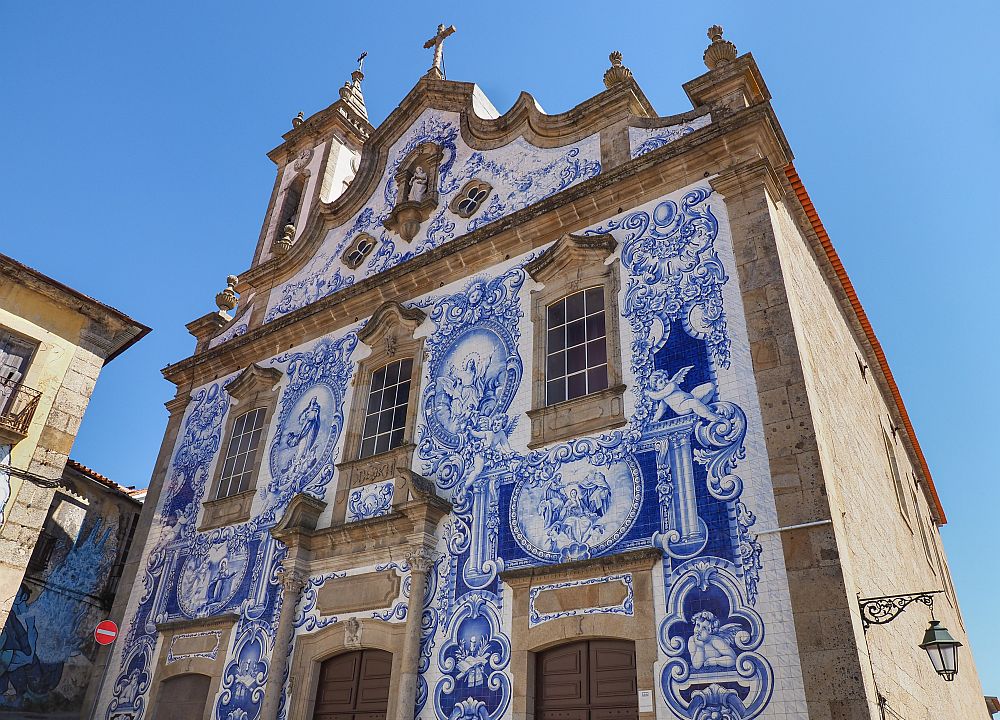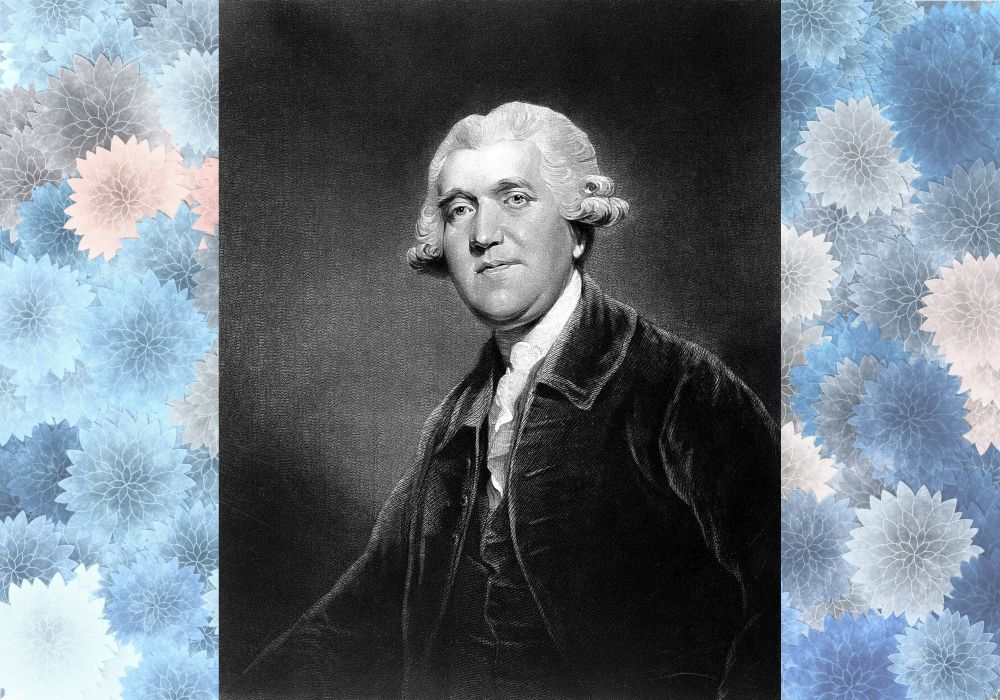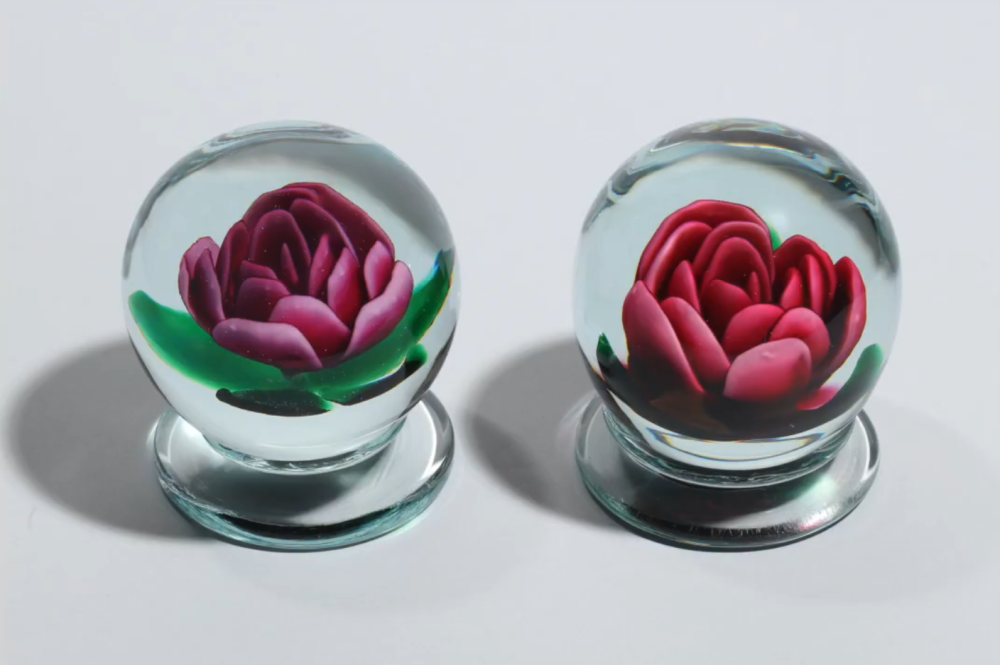
[Image above] Example of Kister porcelain dolls from the mid-1800s. Credit: Michael Canadas, YouTube
As a former doll collector, I always looked forward to receiving my copy of Doll News, published by the United Federation of Doll Clubs, of which I was a member for many years. As I was sorting through old copies, I came upon the Spring 2000 issue, which featured an article by Mary Krombholz titled “A visit to the Kister porcelain factory.” I was intrigued to find out more.
Thuringia: A major region of ‘white gold’ production
Originally invented in China around the eighth century, hard-paste porcelain started being produced in Europe in the early 1700s when German alchemist Johann Friedrich Böttger uncovered the secret to its creation. The first European porcelain factory opened in the city of Meissen in 1710 (still in operation today), and soon porcelain factories started opening in other places around Germany, including the Kister factory in Scheibe-Alsbach, Thuringia.
Thuringia is a German state named after the Thuringii Germanic tribe, who occupied the region around 300 CE. The area is known for having abundant deposits of kaolin, robust wood supplies (to fuel the kilns), and access to skilled workers.
The Volkstedt Porcelain Factory in Rudolstadt, considered the oldest in Thuringia, was founded in 1762. However, it was during the 19th century that Thuringia came to play a significant role in the porcelain industry. The key to Thuringia’s success was making porcelain available to everyone instead of just the wealthy.
More than 100 porcelain factories were operating in Thuringia until WWII, after which several economic downturns—as well as the depletion of kaolin deposits—led many to go out of business, according to Krombholz. However, the Kister factory, known for its porcelain dolls, is one of the factories that survived.
Evolution of the Kister factory
In the book Dolls: From Kewpie to Barbie and Beyond, Judith Edison writes that Germany was the doll manufacturing center of the world from the mid-1800s until WWI. Kestner & Co. is considered the founder of the doll industry in Thuringia, but the Kister factory—another one of the seven prominent porcelain doll factories in Thuringia—is one of the only ones to survive past WWII.
The exact origins of the Kister factory are somewhat murky. According to Krombholz, the factory was established in 1834 by Louis/Ludwig Oels, Daniel Kaempf, and Friedemann Greiner. (The Greiner family, whose five sons were painters and potters in Thuringia, helped found the porcelain industry in 1764.) In contrast, the 1897 Leipzig Trade Fair Address Book lists the start date as 1838.
The factory went through several name changes as different owners took over. However, the name that is remembered today—Kister—comes from the family that operated the factory for several generations.
From 1844 until 1863, the factory was known as Dressel, Kister & Co. after Johann Friedrich Kister and his colleague Dressel purchased the porcelain factory from Kampfe and Greiner (who themselves purchased the factory from Oels in 1839). By 1857, the factory became known as the first Thuringian factory to make figurines and dolls on a large scale.
After Friedrich Kister died in 1863, his son, August Wilhelm Fridolin Kister, took over the Thuringian factory, renaming it A.W. F(r) Kister. Before his death, Friedrich Kister bought a factory in the neighboring state of Bavaria that he gave to his daughter. This factory in Passau, which also produced porcelain dolls, kept the name Dressel, Kister & Co. up until its closure around the time of WWII.
The Kister factory received numerous awards over the years, though it isn’t clear if these were specifically for dolls. Krombholz writes that Kister doll heads and figures were exhibited at the 1854 industrial show in Munich. From 1861 to 1904, the factory won gold medals at various exhibitions around the world. In 1893, the factory participated in the Chicago World Exhibition, showing jointed dolls, cloth dolls, and bathing dolls, according to Krombholz.
In 1905, Fridolin Kister sold the Thuringian factory to his son-in-law, G. Offeney. Then in 1920, the factory was sold to Baron von Schilling, who kept the name of A.W.F. Kister GmbH until 1962, when it became a state-run operation. The factory was nationalized in 1972 under the German Democratic Republic.
After German unification, the factory was reprivatized in 1990 and taken over by another porcelain company, who in turn sold the property back to the state. After that point, most of the factory was demolished. By the time of Krombholz’s visit (exact date unknown), there were only a few dilapidated buildings left.
Doll manufacture at Kister
Kister dolls belong to the category of china dolls, which the United Federation of Doll Clubs defines as dolls made from glazed porcelain. The dolls consist of porcelain heads that sometimes include shoulders, and these heads plus shoulders are then attached to home-made cloth bodies. (The Kister factory also made half dolls and bathing dolls.)
In her Doll News article, Krombholz provides some clues about the doll manufacturing process at Kister. Porcelain slip made in huge brick vats would be poured into plaster molds. A mold storage area contained shelves labeled with white porcelain plaques, with blue numbers so workers knew which molds were going to be used.
The plaster molds were transferred in carts via a track in front of the kilns for firing. Wood fuel was eventually replaced by coal and then electricity. After firing, the facial features and hair were painted on by hand.
A hand-operated machine called a holzwolle turned pieces of wood into shavings, which were used to stuff the doll bodies or as packing material for shipping products. Another hand-powered machine ground the rejected porcelain pieces, termed “snowing,” and these ground bits were used to decorate other items.
Most Kister porcelain doll heads have blue irises without outlines or highlights. They normally feature red strokes painted above the eyes, red dotted nostrils, and single-stroke eyebrows.
The most distinctive feature of Kister dolls is the mouth. The upper lip has low, far-spaced peaks while the lower lip is long, narrow, and shorter than the upper lip. Sometimes the lower lip resembles a horizontal oval, not quite meeting the upper lip.
The hairstyles of Kister dolls give some idea of when the mold was first made, as they changed with the style of the era (see this article). For instance, dolls from the 1840s had a Queen Victoria hairstyle with the hair looped under the ear.
Today, Kister dolls can still be found online for purchase in a range of prices. Check out here and here to see the variety available. You can also learn more about the Kister family here.
Further reading
“Chapter 1: The Golden Age,” from Dolls: From Kewpie to Barbie and Beyond (Judith Edison), Brompton Books Corp., 1994.
The Ultimate Doll Book (Caroline Goodfellow), Dorling Kindersley, Ltd., London, 1993.
“Chapter 16: China Head Dolls,” from The Dolls of Yesterday (Eleanor St. George), Charles Scribner’s Sons, 1948.
The Collector’s Encyclopedia of Dolls (Dorothy S., Elizabeth A., and Evelyn J. Coleman), Crown Publishers, Inc., 1968.
“Chapter 10: Porcelain and Parian Dolls” and “Chapter 13: German Doll-Makers,” from The Collector’s History of Dolls (Constance Eileen King), Bonanza Books, 1977.
“Decorated China Heads” (Frances Walker) and “China Dolls” (Dorothy and Evelyn Jane Coleman), from The Best of the Doll Reader, Hobby House Press, 1982.
Author
Laurel Sheppard
CTT Categories
- Art & Archaeology


